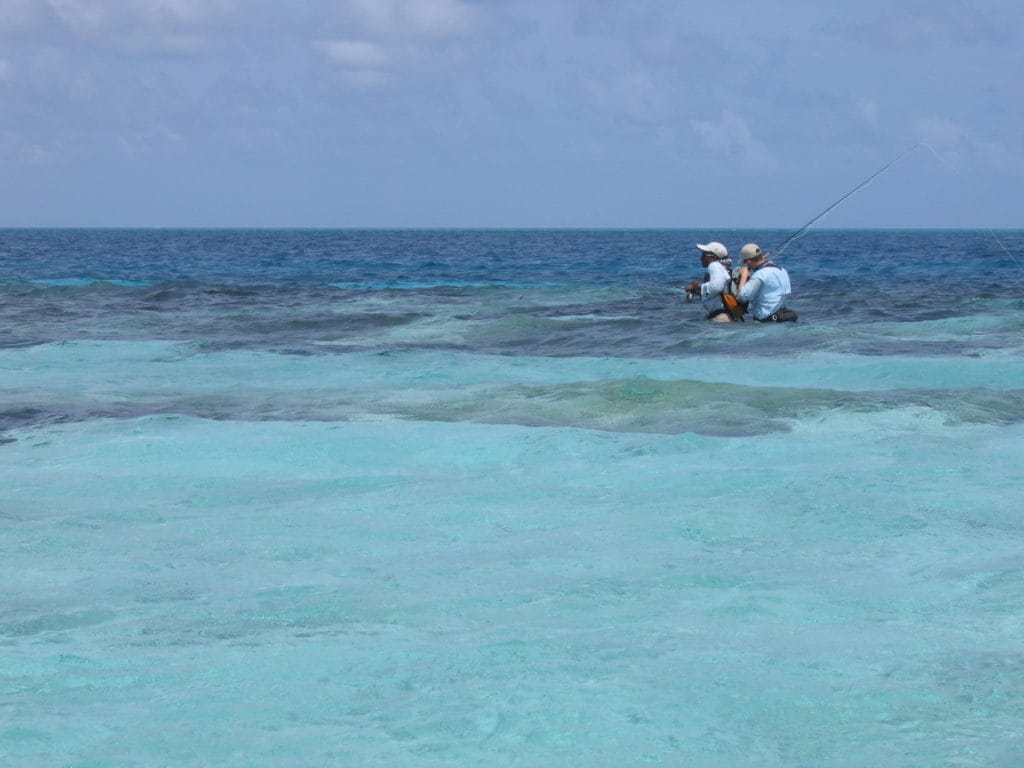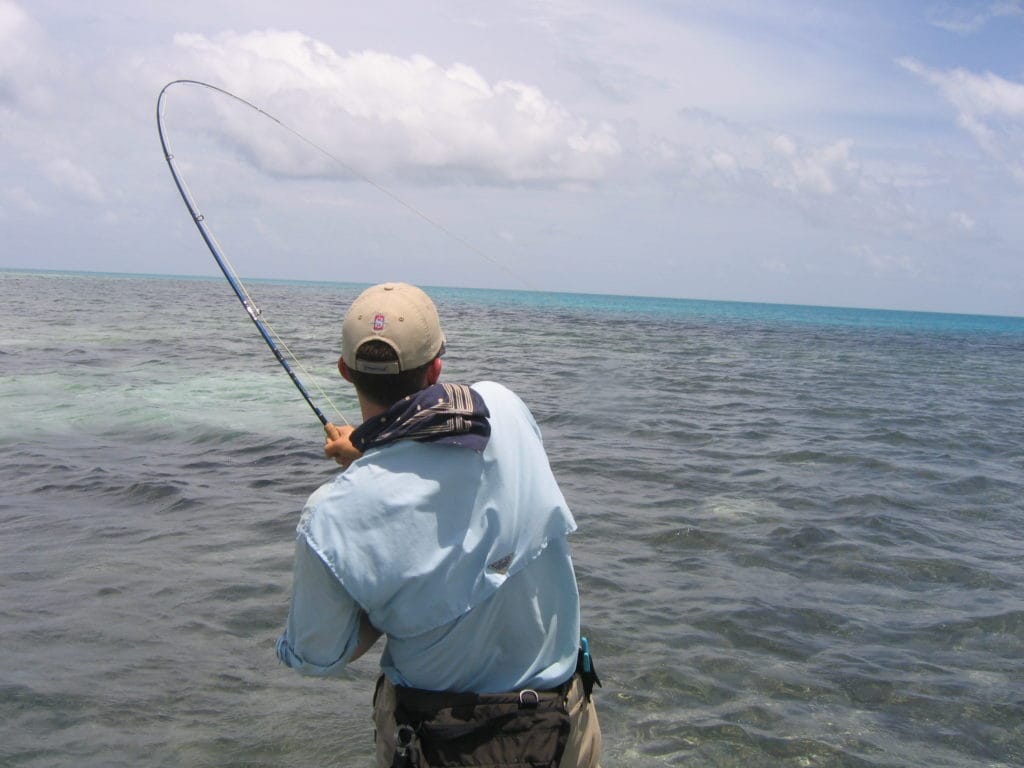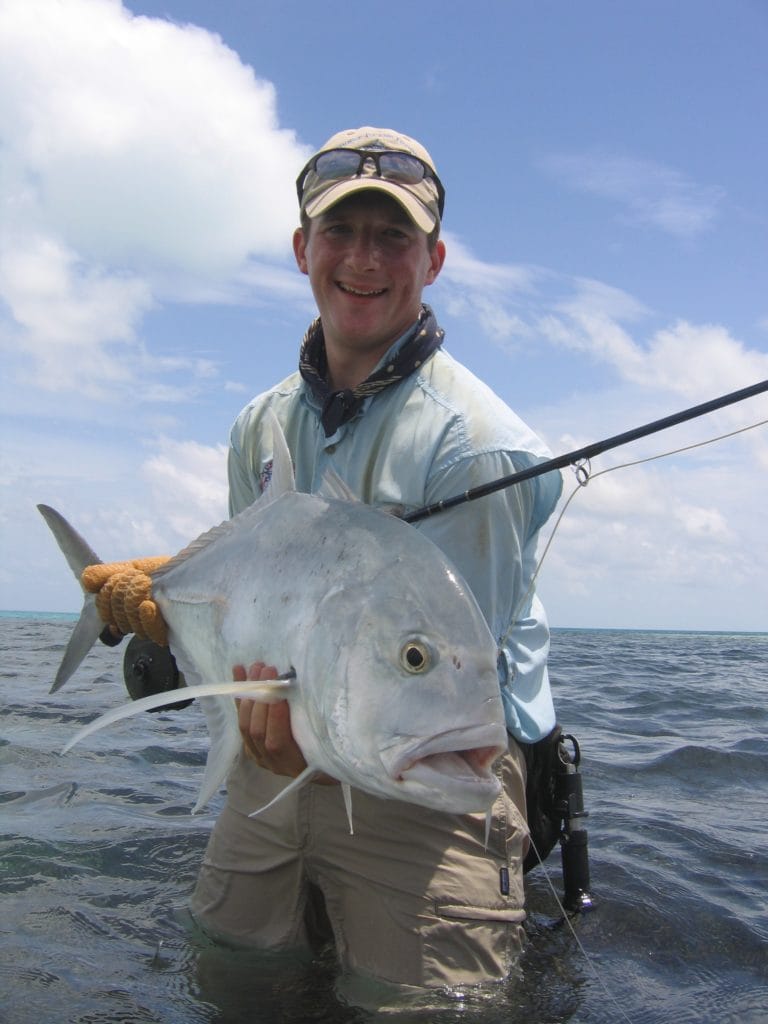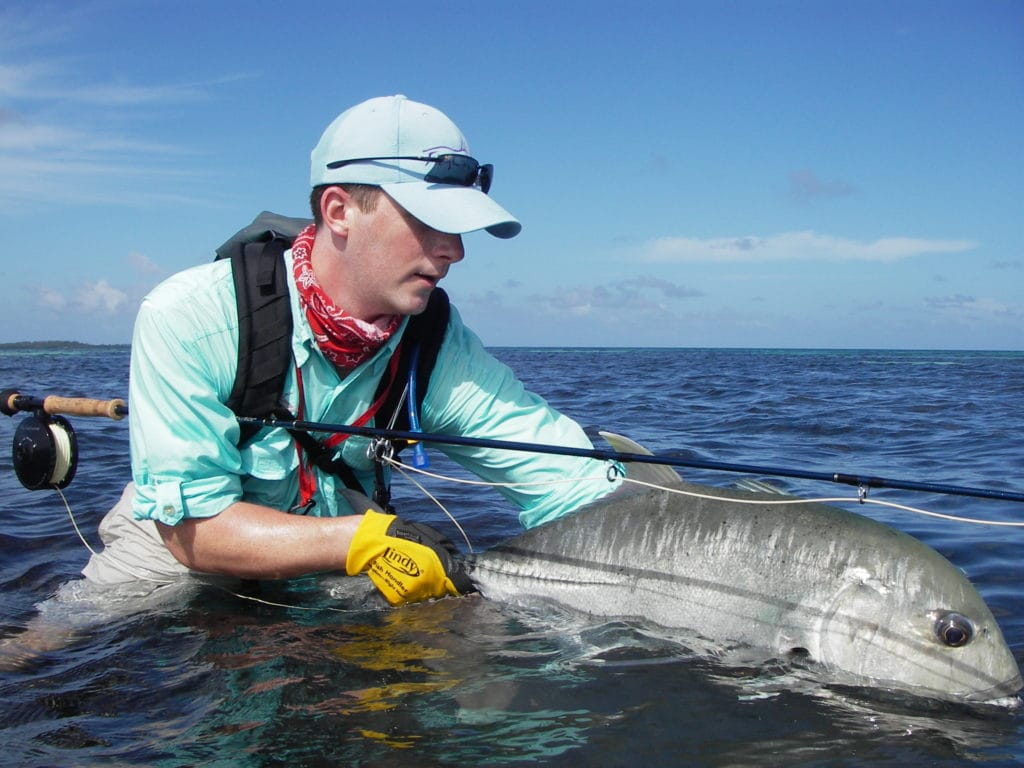An extract from “GT – a Fly Fishers guide to Giant Trevally”
Early in my saltwater career as I fished around the Caribbean I heard tales of this mad fish species that swam in other waters, had the power of permit but were ferocious with it. Having spent a number of years with a permit obsession, the thought of chasing after a fish species that might be more inclined to actually eat a fly seemed very attractive. These fish of my dreams were to be found in the Indian Ocean and the Pacific and apparently were too powerful to land on fly. It was only later I discovered that a collective of innovative souls had been catching them on fly on the far-flung atoll of Christmas Island (Kiritimati) in the Republic of Kiribati for several decades. At that time, saltwater fishing had only just ventured across the Atlantic from the US and our focus was still very much on bonefish. When it comes to saltwater flats fishing, we Europeans were some way behind our American cousins.

My first opportunity came when fishing in the Seychelles in the early 2000s. Having sated my need to catch bonefish that day, my guide Serge Samson asked if I would like to try and catch a GT. I still remember the thrill I felt at his words, offering me the opportunity I had been waiting for. Up to this point, my flats experience had been limited to the major Caribbean fisheries, so when we headed away from the comparative safety of the shallows and began to wade deep in the surf line trying to spot GTs, I have to admit I was a little apprehensive. I was fully aware what other species were lurking in the spume and I had never before deep waded in the crashing white water. If someone told me then that 15 years later, every time I saw a shark I would run towards it instead of away from it, I would have thought they were quite mad!

Back then the hunting instinct kicked in, even though I really had no idea what I was looking for. Suddenly, out of nowhere, an electric blue shape against the green turtle grass appeared like an apparition in front of me. I was so shocked, my cast with the then-very foreign 12# was not much more than a flop of 10ft and the fly landed in a dishevelled heap. Previous flats experience would dictate I had spooked my quarry with that cast, but this fish turned on it in a flash, engulfed the fly and took off to the surf line. The speed of the attack and the sheer power of that run completely took me by surprise as I hung on for dear life. I remember thinking at the time, ‘This is incredible, I have to do this again!’

My first GT was not massive: a small 20lbs fish – but it left me with such an overwhelming impression of the manner in which it was caught, and the power of that run, that I was hooked. Since then I have hunted GTs far and wide across the globe, from the Seychelles to Sudan to Christmas Island. Every trip I have done and every encounter I have had, I have strived to understand this extraordinary fish a little more. As a flyrod species, they are unique. Yes, tarpon get bigger and jump out of the water, sailfish and other billfish may run faster, but there is nothing that will prepare you for the speed with which GTs move on the flats. When they decide that they are going to eat, it’s like a jet fighter kicking in an after-burner. The fish accelerates like a sprinter off the blocks, switching direction in a heartbeat. A quick flick of their long dorsal fins and then that big bucket mouth opens to engulf their prey. It is a sight that never gets old.
Tim Babich coined the phrase ‘Gangsters of the flats’ which I feel is highly appropriate. They are the muggers that hide in dark corners, waiting to overcome unsuspecting prey as it passes by. They have a very unique character, and being an apex predator, are extremely opportunistic, focussing on any prey source that is abundant in the location. They follow sharks, hunt on the backs of rays, corral baitfish in packs, eat everything from crabs to birds, and coming in off the ocean they can be truly fearless. Every time I have a close encounter, this incredible species has taught me something new.

Fishing for GTs, like any species you focus on, can become a bit of an obsession. The one thing I have learnt is that GT fishing is not an easy sport, and neither should it be. This fish is at the top of the food chain, and as such should be, in my opinion, fished for on that level. I suppose what I am trying to get across is that hunting this species on fly is not for everyone. A certain skill level is required and anglers should try and attain that base level before attempting to fish for them. I know this a slightly controversial view, but it is fairer on the fish and indirectly on the angler.
I feel it is also important to make the distinction between hunting GTs on the flats with a fly and hunting GTs in other environments. Many fishermen who encounter GTs on a day bluewater fishing, or hit them jigging or popping over structure, will tell you that there is not much to getting them to eat, and all you have to do is locate them to hook them. The only challenge then comes in actually landing them – so for this style of angling, they become an ideal target. In the same way, permit are equally easy to catch on a live crab, but as we well know, trying to persuade them to eat a fly can be soul-destroying. A GT is a totally different fish on the flats and has the potential to be far more cautious. They are not just the brutish eating machines that many make them out to be. In shallow water this species is far more challenging, and even though they have a distinctly aggressive nature, they can exhibit extraordinary cunning. Whether this comes from cognitive ability or just a self-preservation instinct in shallower water is difficult to ascertain, but do not underestimate their amazing ability to learn.
If you would like to learn more about this amazing species then please contact Peter McLeod or call us on +44 1980 847389. If you would like to purchase his book “GT – A Fly Fishers Guide to giant Trevally” click HERE.
